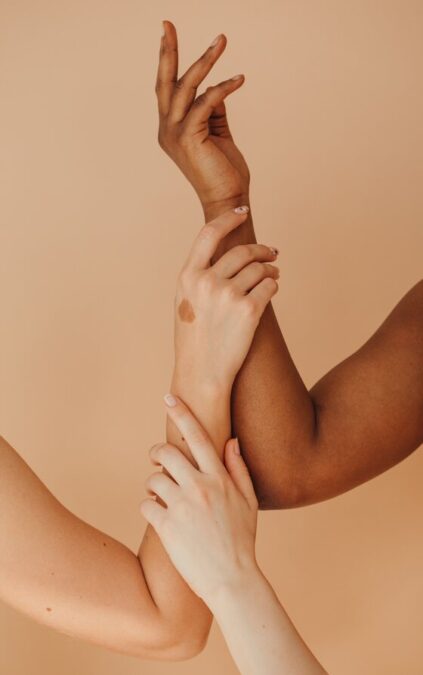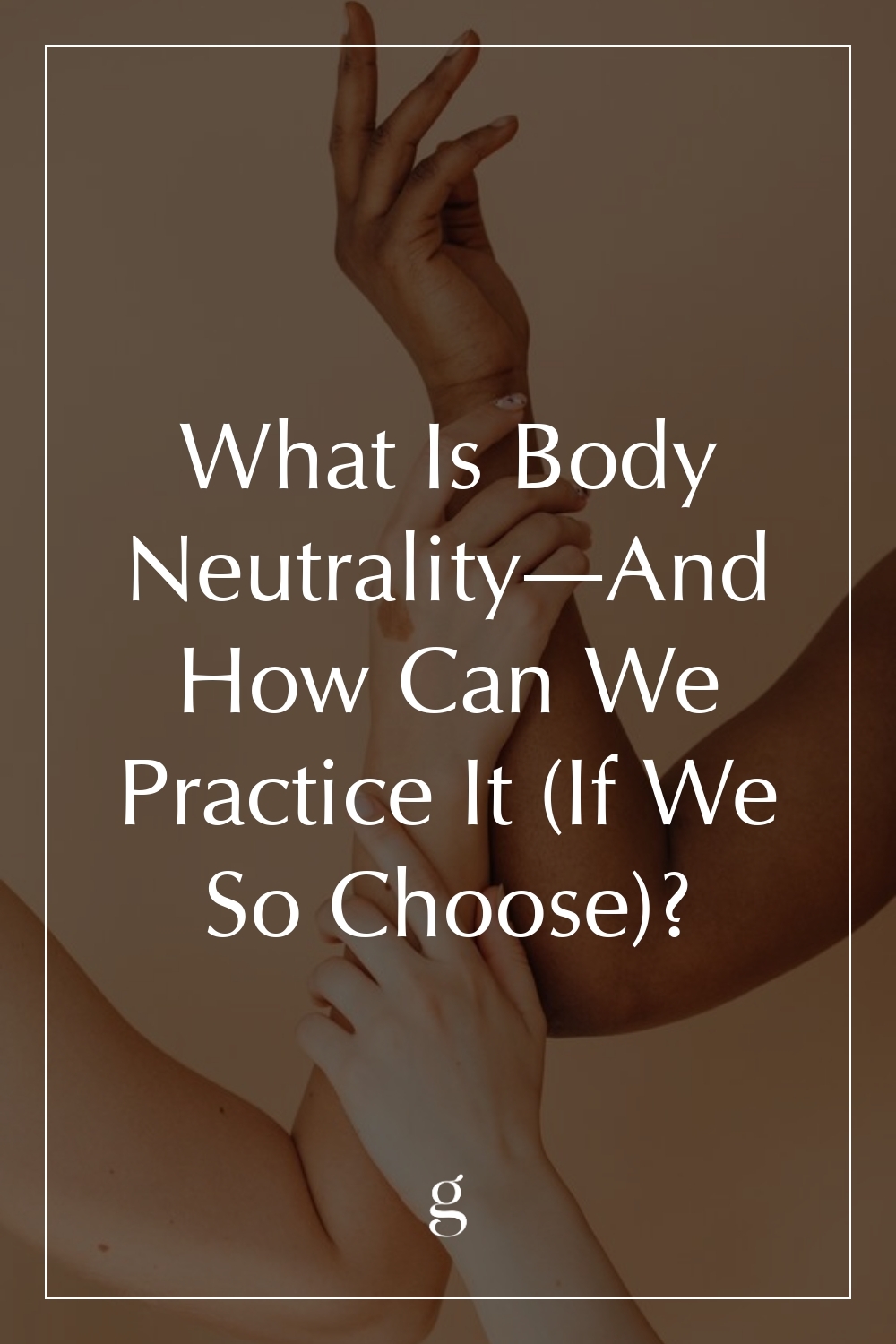
What Is Body Neutrality—And How Can We Practice It (If We So Choose)?
An Alternative To Body Positivity
A few years ago, actress Jameela Jamil told Glamour, “I don’t think about my body ever.” (Pardon?!) Having struggled in her teens and twenties with overexercising, disordered eating, and body dysmorphia, the actress shared that she was embracing a different mindset: body neutrality.
“Imagine just not thinking about your body,” she said. “You’re not hating it. You’re not loving it. You’re just a floating head. I’m a floating head wandering through the world.”
This adjusted perspective can be viewed as both an alternative and response to the body positivity movement, which aims to embrace and empower all individuals regardless of our weight or size. Despite good intentions, however, the movement has received backlash in recent years for neglecting the very bodies that influenced it—as well as the ones that belong to people of color, the disabled, and transgender and nonbinary people.
“Today’s marginalized bodies feel sanitized, if not altogether forgotten, by the [body positivity] movement.”
Birthed from the fat-acceptance advocacy of the 1960s, the current body positivity movement looks much different. Today’s marginalized bodies feel sanitized, if not altogether forgotten, by the movement.
Award-winning body image advocate Stephanie Yeboah told The Guardian that its practitioners must now be “size 16 and under, or white, or very pretty.” Singer-rapper Lizzo said on TikTok earlier this year that the movement has been “co-opted,” while its creators and intended benefactors fail to profit from its mainstream success. And Canadian influencer Sarah Nicole Landry, who is white, told Today’s Parent this past summer that the body positivity community isn’t making efforts to change the systems that keep people out of it: “If you’re not aware of what’s going on for the disability community, in marginalized communities, and with those who live in larger bodies, you’re totally missing the point.”
Body neutrality, in contrast to body positivity, opts to de-emphasize our appearance. “It offers us the chance to focus instead on acknowledging what our bodies do for us,” says Los Angeles-based therapist Saba Harouni Lurie.
Much like neutral self-talk—an objective approach to affirming oneself—body neutrality is founded on facts. Rather than falsely or prematurely claiming an image-based confidence simply because a hashtag encouraged us to, we can instead feel empowered by the services our bodies provide us.
Still, solely honoring physical services can exclude disabled bodies. We must expand our definition to include what our bodies house as well: our uniquely individual thoughts, curiosities, values, and traits. Our organs and internal systems. Our bodies, regardless of capability, are proof of our existence—and that is always worthy.
“Our bodies, regardless of capability, are proof of our existence—and that is always worthy.”
Brianna Clark, a licensed master social worker, psychotherapist, and certified intuitive eating counselor, describes body neutrality as a means to developing respectful relationships with our bodies, even when not feeling good about them. To begin practicing, she offers us a few tips.
Acknowledge Our Versatility
When criticizing or feeling low about a part of our body, Clark suggests we name three things it can achieve. For example, “I hate my arms but they enable me to hug my kids, make dinner, and care for my aging mother.”
Lurie notes it’s a practice that can be implemented regardless of our bodies’ varying abilities. While some of us may elect to focus on strength and skill, we can also consider “how our eyelashes keep sweat out of our eyes; our intestines allow us to digest food and extract what we need; [and] our bodies cool themselves by sweating when we are warm.”
Reframe Our “Fixing” Mentality
We often equate body acceptance with improvement. We convince ourselves that once we have X, we will finally be happy. But those “corrections” can be elusive and ever-changing.
Instead of waiting passively, we can take action assertively. We can ask ourselves how differently we would engage with a certain body part if it already looked the way we wanted it to. Then, we can pursue that behavior.
Rather than making our self-acceptance conditional (“If I was thinner, I would dress sexier”), we can make it the standard (“How can I dress in a way that feels sexy to me in the body I currently have?”).
Prioritize Comfort, Not Punishment
In addition to adjusting our expectations, we can do the same with our environment. Instead of engaging in negative self-speak because we can’t execute a yoga pose, we can seek out a more accessible modification. Rather than focusing our energy on a particular pair of pants we don’t fit into, we can put on an outfit or engage in an activity that does make us feel comfortable—and, in turn, confident.
Simply put, “stop self-punishing,” says Clark. We do not have to subject ourselves to suffering; it’s in our control to both choose and create a space we thrive in.
“We can reject the notion that our body’s value is determined by how it’s built, rather than how it serves us.”
Our culture—systemically conditioned; celebrity-driven; social media-beholden—tends to emphasize and exalt bodies based on their appearance. But what’s considered ideal, or even acceptable, is ever-altering and often intangible. To remove ourselves from that expectation, we can reject the notion that our body’s value is determined by how it’s built, rather than how it serves us. Body neutrality can be the safe space in between, steeped in neither image nor inauthentic optimism.
For those of us whose roads to radical self-acceptance are a bit windier than others, body neutrality can be just the beginning. Says Lurie, shifting to the mindset may not happen overnight, but “practicing appreciation for the different ways your body takes care of you is a good start.”
RELATED READING
Danielle Cheesman was born and raised in New Jersey, where she lived until moving to Philadelphia to study journalism at Temple University. She has spent her years writing and developing editorial visions for music, art, and lifestyle brands. Now residing in Los Angeles, you can usually find her taking pictures, making playlists, or cuddling her pup. Say hi on Instagram!

